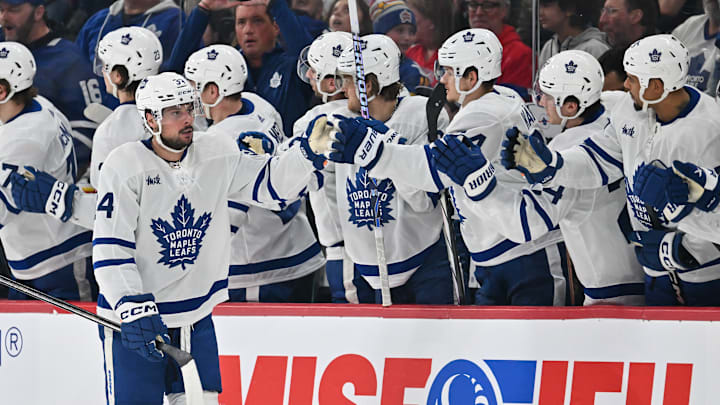More Resilience
This final point could well be a situation where we consider the glass half full rather than half empty.
Individual Toronto Maple Leafs have faced a lot of adversity this year, and the team is probably stronger as a result. There are plenty of examples to choose from.
The most obvious is probably the case of Ilya Samsonov. The first part of the year was not kind to the Russian goaltender. Game after game, Sammy was letting in soft goals, giving up generous rebounds, overplaying shots, and looking completely lost. It got to the point where he was literally unplayable.
So the Toronto Maple Leafs did what they had to do, and put what had been their number one goaltender on waivers, in the middle of the season. Not surprisingly, Samsonov cleared waivers and went down to the AHL Toronto Marlies, but didn’t play a game there.
He took a break from the game, spent time with the Marlies’ goalie staff and his parents (visiting from Russia), and somehow repaired his fragile state of mind.
Since returning to the Leafs (a minor miracle in itself), Samsonov has re-established himself as the starting goalie heading into the playoffs. He still has his ups and downs, but appears to be able to shrug off a bad goal or a poor game much more easily than before his demotion to the AHL. The ability to bounce back quickly is a much-desired ability for a playoff goaltender.
Other players have also rebounded from tough starts to their season. Tyler Bertuzzi couldn’t buy a goal for months. Ryan Reaves couldn’t play a shift without chalking up a minus, and like Samsonov, was unplayable.
On defence, the Leafs have employed Morgan Rielly and a revolving door of “depth” players. TJ Brodie has struggled mightily at times. Mark Giordano has very much looked like the oldest player in the NHL, but is determined he still has something to offer this season. Jake McCabe struggles with inconsistency. Timothy Liljegren struggles to stay healthy.
Despite all of these issues, the Toronto Maple Leafs have marched on, a flawed team that still has a chance to go a long way this year in the Stanley Cup playoffs.
They say that what doesn’t kill you makes you stronger. It may also win you a Stanley Cup.
